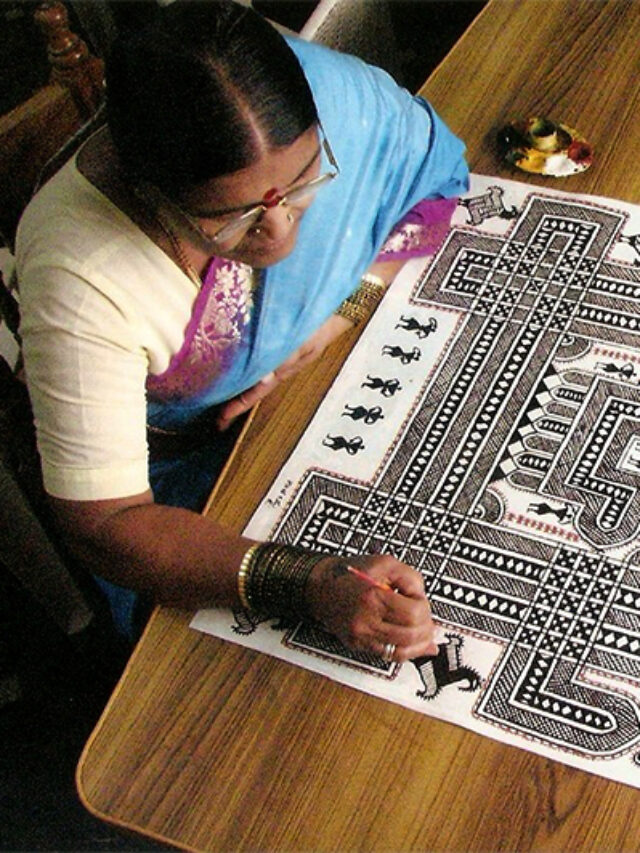Introduction
Indian tribal art is a vibrant and integral part of the country’s cultural tapestry. With diverse tribal communities spread across the vast landscape, India boasts a wide array of tribal art forms, each with its unique style and story. This article delves into various tribal art forms, from the intricate Madhubani tribal art of Bihar to the expressive Gond tribal art of Madhya Pradesh, showcasing the rich heritage and contemporary relevance of these traditional arts.
The Essence of Indian Tribal Art
Tribal art in India is characterised by its use of natural materials, vivid colours, and themes rooted in folklore, nature, and tribal mythology. These art forms are not just about aesthetics; they reflect the beliefs, traditions, and lifestyles of the tribal communities.
Prominent Tribal Art Forms
Gond Tribal Art: Originating from Madhya Pradesh, Gond tribal art is known for its intricate patterns and vibrant use of colours. It often depicts flora, fauna, and daily village life.

Madhubani Tribal Art: Hailing from Bihar, Madhubani tribal art is famous for its geometric patterns and mythological motifs. Traditionally done on walls and floors, it has now found a place on canvases and textiles.

Santhal Tribal Art: The Santhal tribe, primarily found in Jharkhand, West Bengal, and Odisha, creates art that is simplistic yet profound, often depicting everyday scenes and nature.

Saura Tribal Art: This art form from Odisha features intricate wall paintings called ‘ikons’, representing their deities and cosmic events.

Warli Tribal Art: From Maharashtra, Warli tribal art uses basic geometric shapes to tell stories of social events and daily activities.

Bastar Tribal Art: Bastar in Chhattisgarh is known for its metal crafts and intricate wood carvings, reflecting the rich tribal culture of the region.

Regional Variations in Tribal Art
Tribal Art of Bihar
Bihar is home to the famous Madhubani tribal art, known for its detailed patterns and vibrant colours. The art is traditionally done on mud walls but has transitioned to paper and canvas, gaining international acclaim.
Jharkhand Tribal Art
Jharkhand’s Santhal tribal art is a reflection of the tribe’s deep connection with nature. The art is characterised by its simplicity and depiction of rural life.
Chhattisgarh Tribal Art
Chhattisgarh’s tribal art includes the unique Bastar tribal art, known for its metal works and wood carvings, often depicting tribal gods and folklore.
Rajasthani Tribal ArtRajasthan offers a mix of tribal and folk art, with the Rajasthani tribal art being a vibrant blend of intricate designs and bright colours, often seen in wall paintings and textiles.
Tribal Art of Karnataka
Karnataka’s tribal art is rich with symbolism and often involves the depiction of local deities, rituals, and nature, reflecting the state’s diverse tribal cultures.
Contemporary Relevance of Tribal Art
Tribal art painting has found a new lease on life as contemporary artists and designers incorporate traditional motifs into modern designs. From tribal art wall painting to tribal art saree, the fusion of old and new keeps these traditions alive.
Promoting Tribal Art
To ensure the survival and growth of tribal art, various initiatives are being undertaken. Art fairs, online platforms, and government schemes are helping tribal artists reach a broader audience, thus preserving these invaluable art forms for future generations.
Conclusion
India’s rich cultural legacy is demonstrated by the diversity of its tribal art. Every kind of art, be it Madhubani or Gond tribal art, narrates a different story. Supporting and advancing these traditional arts will help to guarantee that these lively manifestations of culture survive in the contemporary era.
Feature Image: Woman doing Chittara Art from Karnataka| Courtesy: caleidoscope






